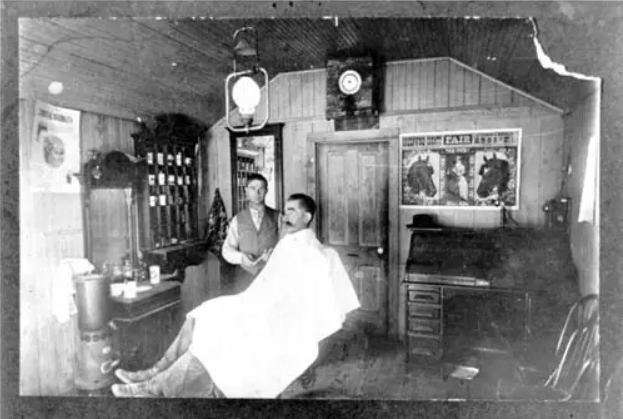
Many people visit hair salons multiple times a year, if not monthly, but never stop to ask themselves; how did this profession get started in the first place? What is the history of hair salons and where did they begin? Here we will explore this topic and answer some of the most interesting questions regarding the origins of hair salons.
The Beginnings
The first hair stylists were actually barbers. Barbers got their name from the latin word “barba” and the profession seems to have started in Europe. Some of the earliest accounts of these barbers come from 2,300 years ago in the Sicilian region of Italy. Later, Romans adopted the trade and many became traveling barbers. Since they did not have their own shops, many cut hair in the homes’ of their clients or outside in the street. Even in relation to the prices of these antiquated times, most barbers offered their services for very cheap because of the fierce competition that existed in the profession as well as the reservations that people had about accepting barber services due to the blunt tools and razors which were used. Some people even referred to these early barbers as “butchers” because the dull, copper razors they used often cut and scarred their clients’ necks. Interestingly, the musical “Sweeney Todd” is derived from this early reputation of barbers. A few barbers of the time with exceptional tools and a developed skill-set did manage to get wealthy because their services were sought by the upper class who were able to pay the elevated rates this small percentage of barbers were charging.
A Little Later In History
The best example of the progression of the barber and hairstylist profession takes us to England. Interestingly, many barbers doubled as surgeons and/or dentists because they were more skillful with razors than other medical professionals. At this point in time, they did have their own shops and commercial locations. In fact, in England, barbers became known as “barber surgeons” and were paid more than ordinary surgeons because they generally possessed more refined abilities with razors. One of the most coveted barber skills at this time was “bloodletting” which was medically recommended for almost all illnesses and maladies. The “barber pole,” historically, was just the structural column or bannister outside of a “hair” shop which was wrapped in bloody clothing that the barber was drying after bloodletting sessions with their clients. This created the now recognizable “red and white” striped pole which we see today.
The Fall Of Multiple-Profession Hair Stylists
Around the 15th century, actual medical professionals began to complain that hair stylists and barbers had too much privilege. They complained that being able to label yourself as a barber, dentist and surgeon was unfair as most hair professionals had no previous medical experience. In addition to this, and due to their lack of medical experience, many barber-surgeons were inventing medical treatments that ultimately hurt their clients and the public was noticing.
The Start Of Modern Hair Salons
As science and medicine advanced, barbers and hair stylists were no longer able to keep up with the surgical techniques being used by actual medical professionals. Due to a combination of the public losing trust in the medical abilities of hair professionals and new laws being enacted which prevented hair professionals from practicing medicine, barbers and hair stylists moved away from bloodletting, dentistry and the other pseudo-medical practices they were engaging in and began to diversify their services into beauty-related practices such as styling and wig-making.
Conclusion
Today we know hair salons only as the place for a haircut, dye-job or style service. However, this was not always the case. Historically, hair stylists performed services which we wouldn’t dream of getting done outside of a hospital or dentist’s office today. This just goes to show the strange evolution of what eventually became today’s hair and beauty salons.